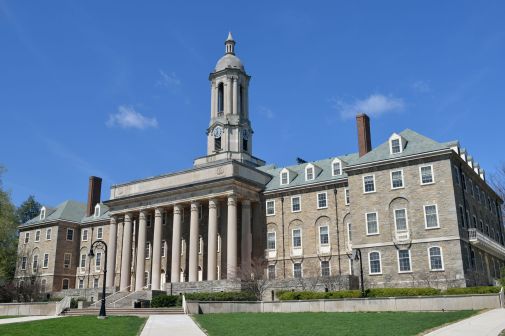In higher ed, not all chatbots are created equal

From Connecticut to California, a growing number of colleges and universities across the country have embraced the use of artificially intelligent chatbots.
It’s easy to see why. Recent research from the Brookings Institution has found that artificial intelligence can play a transformative role in helping students navigate the enrollment and admissions process. Whether at small private colleges or large public universities, chatbots have made significant differences in increasing enrollment, retention, and reducing summer melt.
Since adopting our chatbot, nicknamed ACE, we’ve seen these kinds of results at the University of South Carolina Aiken. After launching ACE in December 2018, freshman deposits — students who are committed to enrolling by our May 1 deadline — increased by more than 7 percent. As of that same date, nearly 10 percent more students were registered for first-year orientation compared to the previous year.
Make no mistake, these are significant numbers. Even more so considering that both high school graduation and college enrollment rates continue to decline across the country. Our success with ACE reflects the massive potential for artificial intelligence to help more students enroll in and complete college.
But these results don’t happen overnight. And our story could have had a very different ending if we had chosen the wrong technology to work with or if we had expected the chatbot to solve all of our problems for us. Because not all chatbots are created equal.
Using artificial intelligence to increase student success takes more than simply pressing go and watching the magic happen. It takes more than just nudging in a vacuum. It’s not magic, and it’s not about finding a one-size-fits-all “plug and play” solution. Rather, it’s about finding the best ways to utilize this cutting-edge technology to help students.
Like most successful endeavors, using AI requires a strategic approach, not simply a fanfare-filled launch. An institution must find the tool that will work best for its students, faculty and staff. And just as importantly, it must put in the time and effort needed to maximize the technology’s potential.
At USC Aiken, more than 40 percent of our students are first-generation, and many of them come from economically disadvantaged backgrounds, arriving with fewer resources than their peers. We knew we needed a solution that could not just help students navigate the admissions and enrollment process, but also maximize the time and capacity of our busy staff. We needed a tool that could respond quickly to students’ questions, provide them with nudges to keep them on track, and interact with them in such a way that they felt compelled to keep conversing.
For us, that meant looking for a technology that was specifically designed with higher education in mind — one that was built to respond to the needs of not just students, but also the advisers and support staff who we knew would be interacting with the chatbot on a day-to-day basis. It also meant that we had our own learning to do. We quickly realized that in order to be effective, ACE needed to reach students using the medium that was most familiar to them.
That’s why rather than living on our website (which, despite our best efforts, is still not students’ favorite site to visit) or using Facebook Messenger, ACE communicates with prospective USC Aiken students via text message — an approach that makes responses quicker, more personal and more effective.
Since the chatbot, developed by AdmitHub, launched in December of 2018, students have sent more than 20,000 messages through ACE. We’ve facilitated conversations on everything from reminding students about deadlines to inviting them to events to polling them about the issues or questions they need the most help with.
Best of all, just 80 of those messages needed the attention of USC Aiken staff. In the first six months after launching, ACE freed up 332 hours for our staff, giving them the time they need to work with students and families who require more personal attention, rather than spreading themselves thin answering other important, but comparatively simple, questions.
Not only that, but ACE has proven popular with our students, who have asked it out on dates, what planet it’s from and what its favorite ice cream flavor is (it’s chocolate chip cookie dough, for the record). Among admitted students who are planning to enroll at USC Aiken, more than 95 percent found ACE helpful and even more recommended that the chatbot start talking to students interested in coming to Aiken in 2020.
Perhaps most importantly, ACE has helped us to rethink the way we communicate with students overall. Texts have replaced emails, we’re able to respond 24/7 and our staff and students are more connected than they’ve ever been before.
It’s easy to think that AI can be the solution to all your problems. And all too often, chatbot developers tout the transformative impact of their products on student outcomes. But our experience with ACE has taught us that the technology itself is only part of the equation. How you implement it is just as important.
Daniel Robb is the associate vice chancellor for enrollment management at the University of South Carolina Aiken.




